The circulating microbiome signature and inferred functional metagenomics in alcoholic hepatitis
- PMID: 29083504
- PMCID: PMC5867221
- DOI: 10.1002/hep.29623
The circulating microbiome signature and inferred functional metagenomics in alcoholic hepatitis
Abstract
Intestinal dysbiosis is implicated in alcoholic hepatitis (AH). However, changes in the circulating microbiome, its association with the presence and severity of AH, and its functional relevance in AH is unknown. Qualitative and quantitative assessment of changes in the circulating microbiome were performed by sequencing bacterial DNA in subjects with moderate AH (MAH) (n = 18) or severe AH (SAH) (n = 19). These data were compared with heavy drinking controls (HDCs) without obvious liver disease (n = 19) and non-alcohol-consuming controls (NACs, n = 20). The data were related to endotoxin levels and markers of monocyte activation. Linear discriminant analysis effect size (LEfSe) analysis, inferred metagenomics, and predictive functional analysis using PICRUSt were performed. There was a significant increase in 16S copies/ng DNA both in MAH (P < 0.01) and SAH (P < 0.001) subjects. Compared with NACs, the relative abundance of phylum Bacteroidetes was significantly decreased in HDCs, MAH, and SAH (P < 0.001). In contrast, all alcohol-consuming groups had enrichment with Fusobacteria; this was greatest for HDCs and decreased progressively in MAH and SAH. Subjects with SAH had significantly higher endotoxemia (P = 0.01). Compared with alcohol-consuming groups, predictive functional metagenomics indicated an enrichment of bacteria with genes related to methanogenesis and denitrification. Furthermore, both HDCs and SAH showed activation of a type III secretion system that has been linked to gram-negative bacterial virulence. Metagenomics in SAH versus NACs predicted increased isoprenoid synthesis via mevalonate and anthranilate degradation, known modulators of gram-positive bacterial growth and biofilm production, respectively.
Conclusion: Heavy alcohol consumption appears to be the primary driver of changes in the circulating microbiome associated with a shift in its inferred metabolic functions. (Hepatology 2018;67:1284-1302).
© 2017 by the American Association for the Study of Liver Diseases.
Conflict of interest statement
Conflicts of interest: None relevant for this paper.
Figures
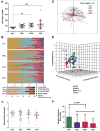
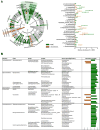



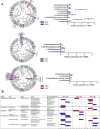
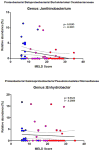

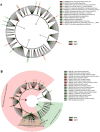

Comment in
-
Circulating bugs in blood in alcoholic liver disease!Hepatology. 2018 Apr;67(4):1207-1209. doi: 10.1002/hep.29624. Epub 2018 Jan 31. Hepatology. 2018. PMID: 29083499 No abstract available.
References
Publication types
MeSH terms
Substances
Grants and funding
LinkOut - more resources
Full Text Sources
Other Literature Sources

